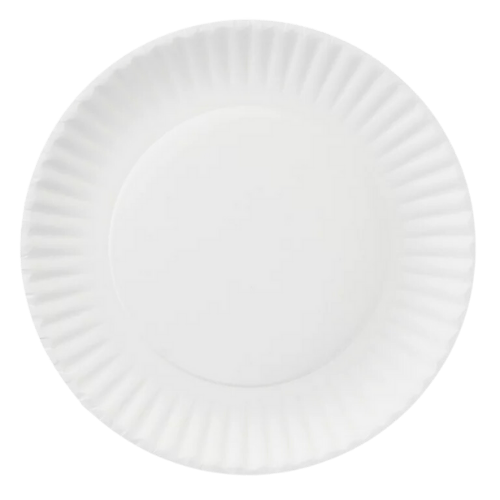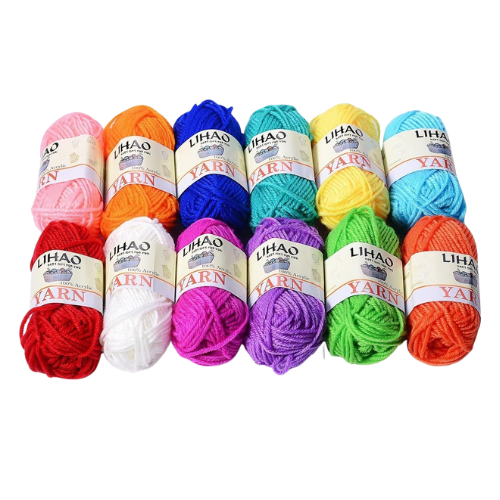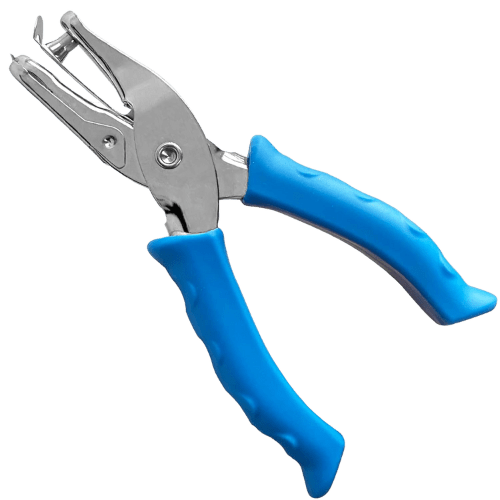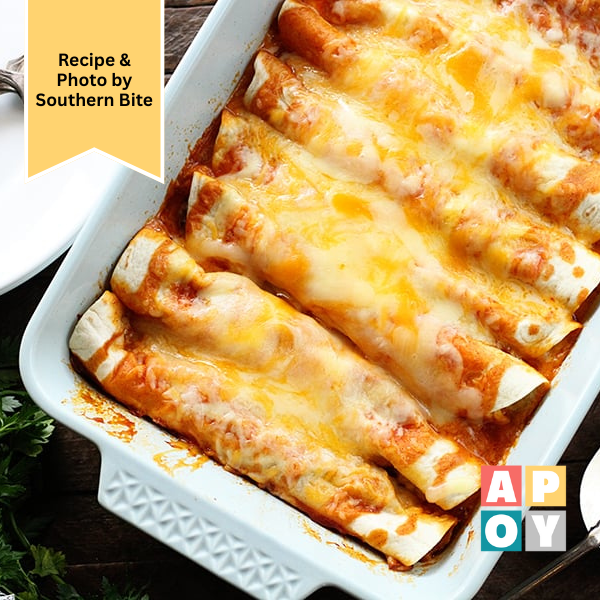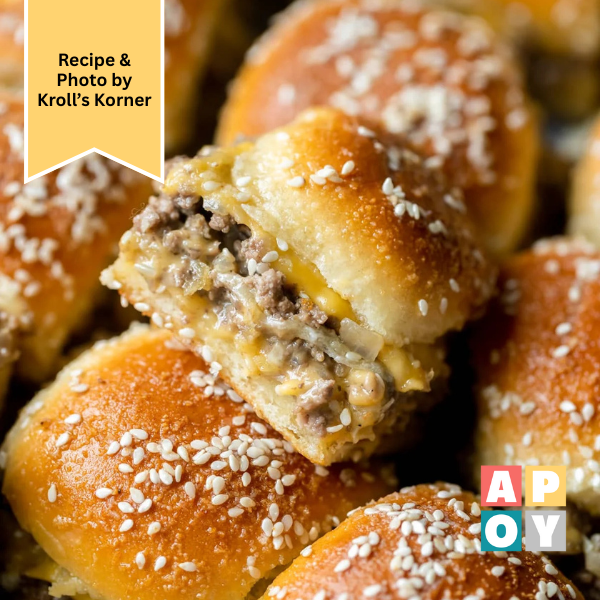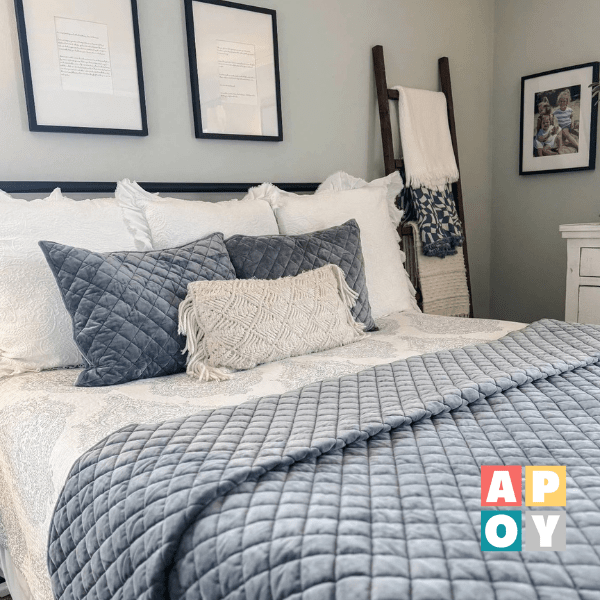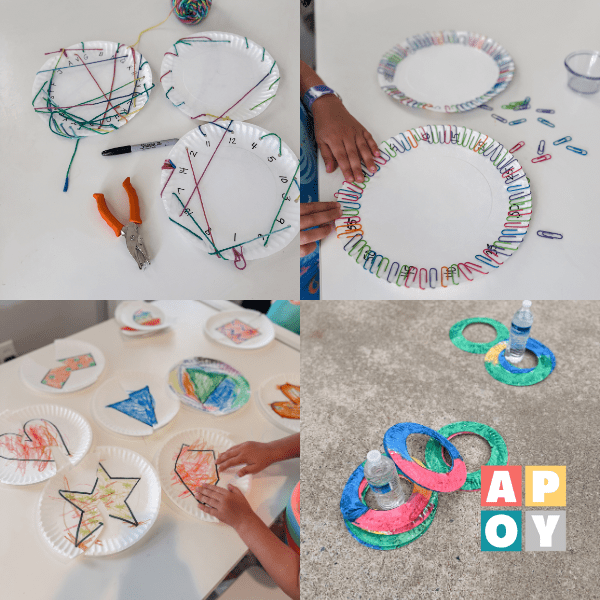Paper Plate Lacing: The Surprisingly Calming Toddler Activity You Can Set Up in 60 Seconds
This easy paper plate lacing activity builds fine motor skills, hand-eye coordination, and concentration with just a plate and string. A perfect at-home activity for toddlers.
This blog post may contain affiliate links. When you make a purchase through these links, I may earn a small commission, at no additional cost to you. I only recommend products that I genuinely believe can benefit you and your family! Your support helps maintain and improve all things A Pop of You. Thanks so much!
Paper Plates & String: An Powerful Duo Unlocked
There’s something magical about giving toddlers a task that keeps their hands busy and their brains engaged—especially if it buys you enough time to finish your coffee while it’s still warm. That’s where paper plate lacing comes in.
It’s one of those quiet, easy wins—simple setup, minimal mess, and somehow it holds their attention longer than the six minutes it takes to unroll all the toilet paper in the house. This paper plate activity is part of our Random Household Objects series (a favorite around here) where we turn everyday items into gold-standard kids activities.
We’re talking one paper plate, one string, and a whole lot of learning wrapped up in something that feels like play.
Why Paper Plate Lacing Is a Toddler Goldmine
This isn’t just a random way to use up leftover party plates. Paper plate lacing builds a whole toolkit of essential early learning skills, including:
- Fine motor control (those little fingers work hard to lace in and out)
- Hand-eye coordination (lining up the string with the hole takes more focus than it looks)
- Concentration and patience (yes, toddlers can do it—even if only for a few minutes)
- Pattern recognition (for little ones ready to lace in a specific order)
- Early sewing skills (no needle required)
It’s the kind of learning activity that grows with your child. For younger toddlers, it’s all about exploration. For older preschoolers, it becomes a creative challenge with shapes, colors, and patterns.
And for you? It’s the answer to “what can I set up in under a minute that doesn’t require glue, batteries, or printing anything out?”
What You’ll Need
Nothing fancy. This is a simple at-home learning win, using what you already have on hand.
- Paper plates (the cheap kind is fine—just not the foam ones)
- Hole punch (or a sharpened pencil if you’re careful)
- Yarn or a shoelace (anything soft and not too thick)
- Tape (to wrap the end of the yarn, if needed)
This is peak activities with random household objects energy—zero prep, zero stress.
How to Set Up Your Paper Plate Lacing Activity
Here’s the full tutorial, no Pinterest-worthy setup required:
Step 1. Grab your paper plate: Plain is fine. If your toddler loves color, let them decorate the front first with crayons or markers.
Step 2. Punch holes around the edge: Evenly space holes all the way around the outer edge of the plate using a hole punch. If you don’t have one, use a sharpened pencil or skewer to carefully poke holes (grown-ups only for this part).
Step 3. Prep your string: Cut a piece of yarn or use a shoelace—something with a firm end for threading. If the yarn frays, tape one end tightly to make it easier for little hands to grip and poke through the holes.
Step 4. Let the lacing begin: Show your child how to push the string through one hole and pull it through the next. That’s it! They can lace around the whole plate, go in and out of random holes, or “sew” their own design.
What They’re Really Learning (Even If It Looks Like Quiet Play)
This is more than a quiet-time filler—it’s a learning activity in disguise.
- Fine Motor Skills: Each little movement—pinching the string, guiding it through a hole, pulling it through—builds hand strength and precision. These are the same muscles kids need for writing, using utensils, and dressing themselves.
- Hand-Eye Coordination: Lining up the string with the hole (and not just stabbing the plate repeatedly) takes serious coordination. Practice like this helps with everything from catching balls to pouring milk without a spill.
- Concentration + Patience: It takes focus to go hole-by-hole. And while it won’t magically turn your toddler into a zen master, it does teach persistence in a fun, low-pressure way.
- Early Sewing Skills: Sewing isn’t just a life skill—it’s a brain workout. Paper plate lacing introduces the concept in a safe, toddler-friendly way. You’re building confidence and independence stitch by stitch.
How to Extend the Activity (For Kids Who Want More)
Want to stretch the play—and the learning? Here are a few easy twists.
- Add Color Coded Holes: Use markers to outline each hole in a specific color and then challenge your child to match the thread to the colors as they lace through. Or create a color sequence to follow around the plate. Now you’re tapping into pattern recognition and color matching skills.
- Shape It Up: Use the holes to create the outline of a shape—like a heart, triangle, or star. Your child can then “trace” the shape with the yarn. This introduces early geometry and spatial thinking, without a worksheet in sight.
- Letter or Name Lacing: Want a kids learning activity that brings in literacy? Use the holes to shape the first letter of your child’s name (or their whole name if you’re feeling ambitious). They’ll be working on letter recognition while lacing.
- Use Beads Along the String: Add pony beads to the string and create a pattern to follow as they lace through the holes. It’s more fine motor practice and early math skills all in one.
- Make It Collaborative: Have two toddlers? Give them each a plate and string, and set a timer for a lacing race (or take turns switching plates to finish each other’s designs). Add turn-taking and social play into the mix.
What If They Just Want to Wrap Yarn Around Everything?
That’s fine. Actually, that’s amazing.
You’ve still got a toddler working on hand-eye coordination and fine motor activity. It might not look exactly how you imagined, but it’s developmentally rich just the same.
If you have a little one who wants to wind yarn around the leg of the table instead of the plate, go with it. Or redirect with, “Want to wrap it around the plate like we’re sewing a donut?” Sometimes giving it a silly name is all it takes to reel them back in.
When to Use This Activity
Paper plate lacing is one of those at-home activities that’s great for:
- Early morning calm time
- Resetting during a cranky afternoon
- A quiet sibling activity while you nurse the baby
- Restaurant bags or travel play
- Independent play while you prep dinner
It’s light, reusable, and doesn’t make noise. Basically, it’s the parenting equivalent of gold.
Looking for more activities using paper plates?
You’re in the right place. This Random Household Objects series is packed with easy, low-prep toddler play ideas that work—especially on those long afternoons when time seems to stand still and everyone needs a little something to do. Here are six simple and powerful paper plate activities to try:
- Paper Plate Ring Toss: Toss painted paper plate rings onto a water bottle target for a gross motor game that boosts coordination, turn-taking, and estimation skills.
- Paper Plate Puzzles: Cut a decorated paper plate into pieces to create an easy puzzle that encourages visual discrimination, problem-solving, and spatial thinking.
- Paper Plate Skip Counting: Use paper clips to count by 2s, 5s, or 10s around the edge of a plate. Great for early math skills, number patterns, and fine motor development.
- Paper Plate Memory: Draw pairs of matching images on plates for a classic flip-and-find game that builds memory, concentration, and social turn-taking skills.
- Paper Plate Pizza Counting: Create a cheesy counting game by matching pepperoni dots to numbered slices. A hands-on way to practice one-to-one correspondence and number recognition.
Because simple really can be powerful—and a humble stack of paper plates might just save your day.
Why Paper Plate Lacing Deserves a Spot in Your Rotation
Because it’s one of those beautifully simple toddler play setups that works on so many levels—and doesn’t come with a cleanup chore list.
This is the kind of paper plate activity that fits into real life: the kind of day where you just need five calm minutes, where your toddler needs something to do but you’re not trying to plan a full lesson. It’s the kind of thing that makes you think, “Wait, why haven’t we done this before?”And in the world of kids activities, that’s a big win.



Hey, I’m Katelyn, the “Achievably Extra” Mom! Join me for creative family fun and practical tips! Let’s inspire each other!




